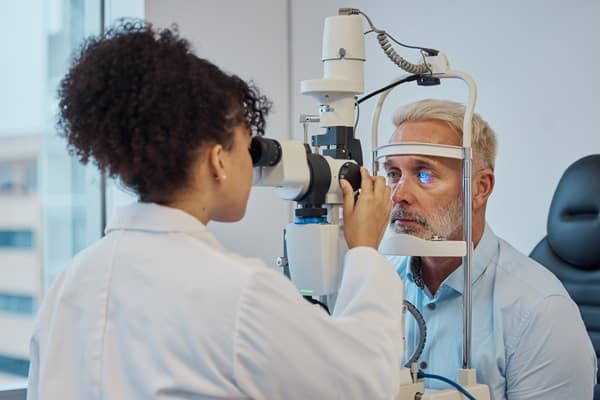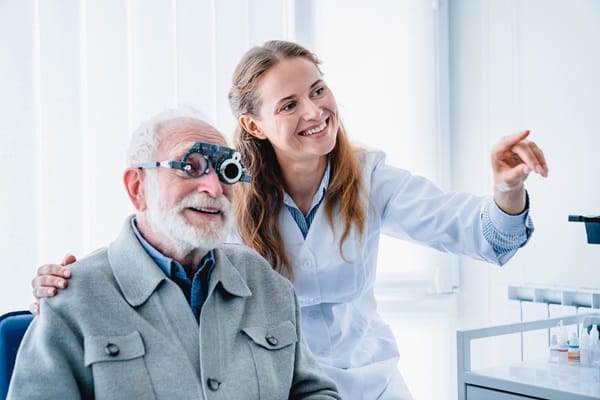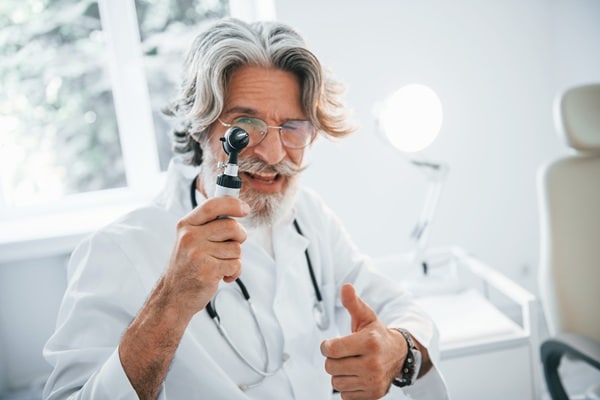Age-related macular degeneration (AMD) is a leading cause of vision loss among people aged 60 and older, impacting millions worldwide. This condition gradually deteriorates the central part of the retina, impairing sharp vision and complicating activities like reading and driving. Understanding your risk factors and recognizing the early signs of AMD can play a crucial role in managing its progression. This post explores the essential aspects of this condition, including its symptoms, risk factors, diagnostic procedures, and available treatments to help you stay informed about this prevalent eye condition.
Contents
What is Age-Related Macular Degeneration?

Age-related macular degeneration is a medical condition primarily affecting the macula, the central part of the retina responsible for clear vision in your direct line of sight. There are two types of AMD: dry and wet. Dry AMD is characterized by the thinning of the macula and pigment deposits, while wet AMD involves abnormal blood vessel growth under the retina, leading to leakage and scarring. Both types lead to a loss of central vision, which is crucial for detailed tasks such as reading and driving. However, it’s important to differentiate between these types as treatment and management strategies differ significantly.
The progression of AMD can vary significantly; dry AMD develops slowly, whereas wet AMD can cause rapid and severe vision loss. Early detection is key to managing the condition effectively. Understanding the specific type of AMD is crucial for determining the appropriate treatment plan and managing expectations regarding outcomes. Awareness of the type and symptoms allows individuals to seek prompt care, which can slow the progression and potentially save their vision.
Recognizing the Symptoms

The early symptoms of age-related macular degeneration can be subtle and often overlooked. Initially, you may notice slight changes in your central vision, difficulty in adapting to low light levels, and a decrease in the intensity or brightness of colors. As AMD progresses, more pronounced symptoms appear, such as blurred vision and a dark or empty area in the center of your visual field. These changes can drastically affect daily activities, emphasizing the need for early detection.
Recognizing these symptoms as early as possible is essential for timely intervention. Regular eye exams can help detect changes that might not be immediately apparent to you. If you experience any of the aforementioned symptoms, it’s crucial to consult with an eye care professional who can perform comprehensive tests to assess the presence and stage of AMD. Early diagnosis allows for earlier treatment, which can help maintain vision and slow the disease’s progression.
Key Risk Factors

Age is the most significant risk factor for developing age-related macular degeneration; your risk increases significantly as you age, particularly after the age of 60. However, genetic factors also play a substantial role. Individuals with a family history of AMD are at a higher risk, suggesting a strong hereditary component to the disease. This genetic predisposition means that family members of affected individuals should be particularly vigilant about regular eye screenings.
Besides age and genetics, lifestyle choices can influence the risk of developing AMD. Smoking, for instance, can double the risk of AMD by reducing the delivery of oxygen and nutrients to the retina. Other modifiable risk factors include hypertension and obesity. Addressing these factors through lifestyle changes can significantly reduce the risk of AMD or slow its progression.
Diagnostic Procedures

Diagnosing age-related macular degeneration involves a combination of detailed eye exams and specific imaging techniques. An eye specialist might use an Amsler grid to detect visual disturbances typical of AMD. Additionally, imaging tests like Optical Coherence Tomography (OCT) can provide cross-sectional images of the eye, highlighting abnormalities in the retina and underlying tissues. These tools are vital for identifying the disease early and accurately.
Another diagnostic tool is fluorescein angiography, which involves injecting a fluorescent dye into the bloodstream to highlight the blood vessels in the eye. This can help detect and classify wet AMD. Early and accurate diagnosis is crucial for managing AMD effectively, allowing for interventions that can preserve vision and improve quality of life. With timely and appropriate diagnostic procedures, treatment strategies can be optimized to provide the best possible outcomes for those affected by AMD.
Treatment Options

Treatment strategies for age-related macular degeneration vary depending on the type of AMD diagnosed. For dry AMD, the options are mostly preventative, focusing on lifestyle adjustments and dietary supplements to slow progression. These may include vitamins and minerals that support eye health, such as antioxidants and zinc. For wet AMD, treatment is more aggressive and can include anti-VEGF (Vascular Endothelial Growth Factor) injections that help reduce abnormal blood vessel growth and leakage. Laser therapy may also be used to seal leaking vessels, helping to stabilize vision.
Ongoing research continues to develop new treatments that offer hope for better management of AMD. Recently, therapies aimed at restoring vision at the cellular level, such as stem cell implants and gene therapy, have shown promise in clinical trials. It’s essential for patients to have regular consultations with their eye care professionals to discuss the most current and effective treatment options available. Staying informed about advancements in AMD treatments can significantly influence the management and outcomes of this condition.
Preventative Measures and Lifestyle Adjustments

Preventing the onset or progression of age-related macular degeneration involves several proactive steps, particularly in modifying diet and lifestyle. Eating a diet rich in fruits, vegetables, and fish can provide essential nutrients like lutein, zeaxanthin, and omega-3 fatty acids, which are beneficial for maintaining eye health. Regular physical activity and maintaining a healthy weight also contribute to better eye health and reduce the risk of AMD.
Smoking cessation is another critical factor in AMD prevention. Smoking significantly increases the risk of developing AMD and accelerates its progression. Additionally, managing other health conditions, such as hypertension and high cholesterol, is vital, as these are known risk factors for AMD. Regular eye exams are crucial, as they allow for early detection and management of any changes in eye health before significant symptoms appear.
The Role of Technology and Support

Advancements in technology have significantly improved the quality of life for individuals with AMD. Assistive technologies such as specialized magnifying glasses, electronic reading devices, and software that enhances screen readability can help maintain independence and functionality. Furthermore, smartphones and tablets with accessibility features allow for text enlargement and voice commands, providing practical support for daily activities.
Support from healthcare professionals, including ophthalmologists and low-vision specialists, plays a crucial role in managing AMD. These experts can provide resources, recommend assistive devices, and suggest coping strategies to deal with vision loss. Support groups and counseling can also be beneficial, offering emotional support and practical advice to those adjusting to life with AMD. Engaging with a community that understands the challenges of AMD can provide comfort and practical help to navigate this condition.
The Bottom Line
Confronting age-related macular degeneration with a proactive approach can profoundly impact management and quality of life. It is essential for those at risk or diagnosed to engage regularly with eye care professionals and embrace available treatments and technologies. Adopting a healthy lifestyle, utilizing support resources, and staying informed about advances in care are crucial steps. By taking charge of their eye health, individuals can effectively navigate the challenges of AMD and strive to maintain their vision and independence.


